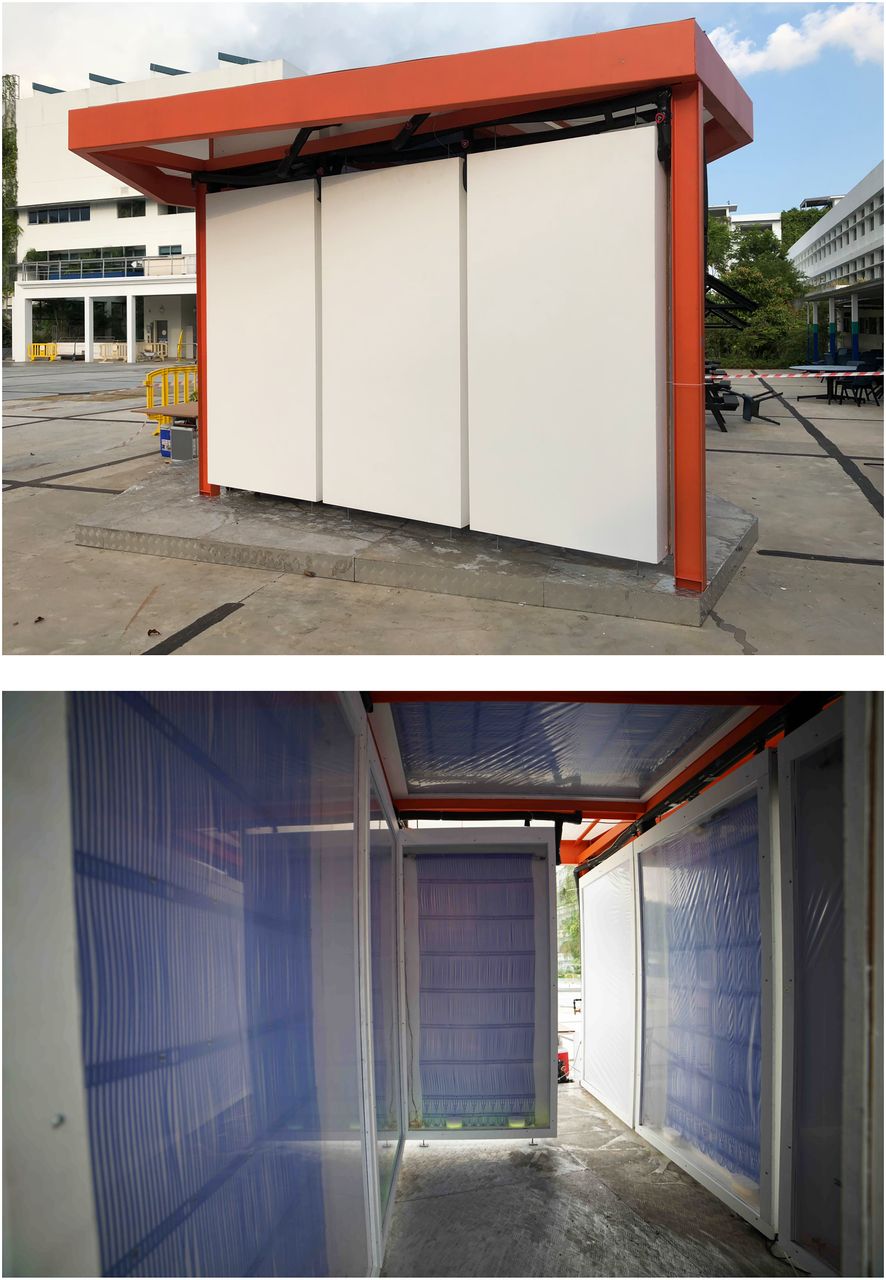Cooling Without Air Conditioning
A collaboration of researchers from various disciplines used an Apogee SP-510 Thermopile Pyranometer and an SL-510 Pyrgeometer to study a method of cooling people by chilling surfaces and using thermal radiation. The manuscript was compiled on March 26, 2020.
The completed pavilion, known as the Cold Tube, allows radiation to pass through, but not air and humidity. This reduces convection and eliminates condensation. Net radiant heat transfer between occupants and surfaces was measured using an Apogee SL-510-SS Pyrgeometer and an SP-510 Pyranometer. The Cold Tube was a success as it demonstrated (1) radiation and convection can be separated for comfort conditioning, and (2) relying on radiation alone can produce comfortable conditions. This research and resulting new technology of membrane-assisted radiant cooling could reduce comfort-related energy demand worldwide (e.g., air conditioning).
Read more about the research abstract below.
 Fig. 1. Schematic of a Cold Tube radiant cooling panel (Upper) and radiant heat transfer through the IR-transparent membrane (Lower).
Fig. 1. Schematic of a Cold Tube radiant cooling panel (Upper) and radiant heat transfer through the IR-transparent membrane (Lower).
ABSTRACT: We present results of a world-first radiant cooling system that made the hot and humid tropical climate of Singapore feel relatively cool and comfortable. Thermal radiation exchange between occupants and surfaces in the built environment can augment thermal comfort. Even in air-conditioned spaces, radiation exchanged between occupants and their surroundings accounts for approximately 50% of their perceived comfort. The lack of widespread commercial adoption of radiant cooling technologies for indoor air conditioning is due to two widely-held views: (1) the low temperature required for radiant cooling in hot and humid environments will form condensation and (2) cold surfaces will still cool adjacent air via convection, limiting overall radiant cooling effectiveness. This work directly challenges these views and dispenses with them. We constructed a demonstrative outdoor radiant cooling pavilion in Singapore that used an infrared-transparent low density polyethylene membrane to provide radiant cooling at temperatures up to 20 °C below the dew point. Surrounding the radiant cooling surfaces by an air-gap and infrared transparent membrane permits radiation exchange to occur between the human body and cold surfaces whilst avoiding condensation on any exposed material as well as significant convective heat transfer losses. Test subjects who experienced the pavilion (n=37) reported a 'cool' to 'neutral' thermal sensation 81% of the time, despite experiencing 29.6 ± 0.9 °C air at 66.5 ± 5%RH and with low air movement of 0.26 ± 0.18 m s-1. Comfort was achieved with a coincident mean radiant temperature of 23.9 ± 0.8 °C, requiring a chilled water supply temperature of 17.0 ± 1.8 °C. The pavilion operated successfully without any observed condensation on exposed surfaces despite an observed dewpoint temperature of 23.7 ± 0.7 °C. The coldest conditions observed without condensation used a chilled water supply temperature 12.7 °C below the dew point, which resulted in a mean radiant temperature 3.6 °C below the dew point of 23.7 °C.

Fig. 2. The completed Cold Tube
